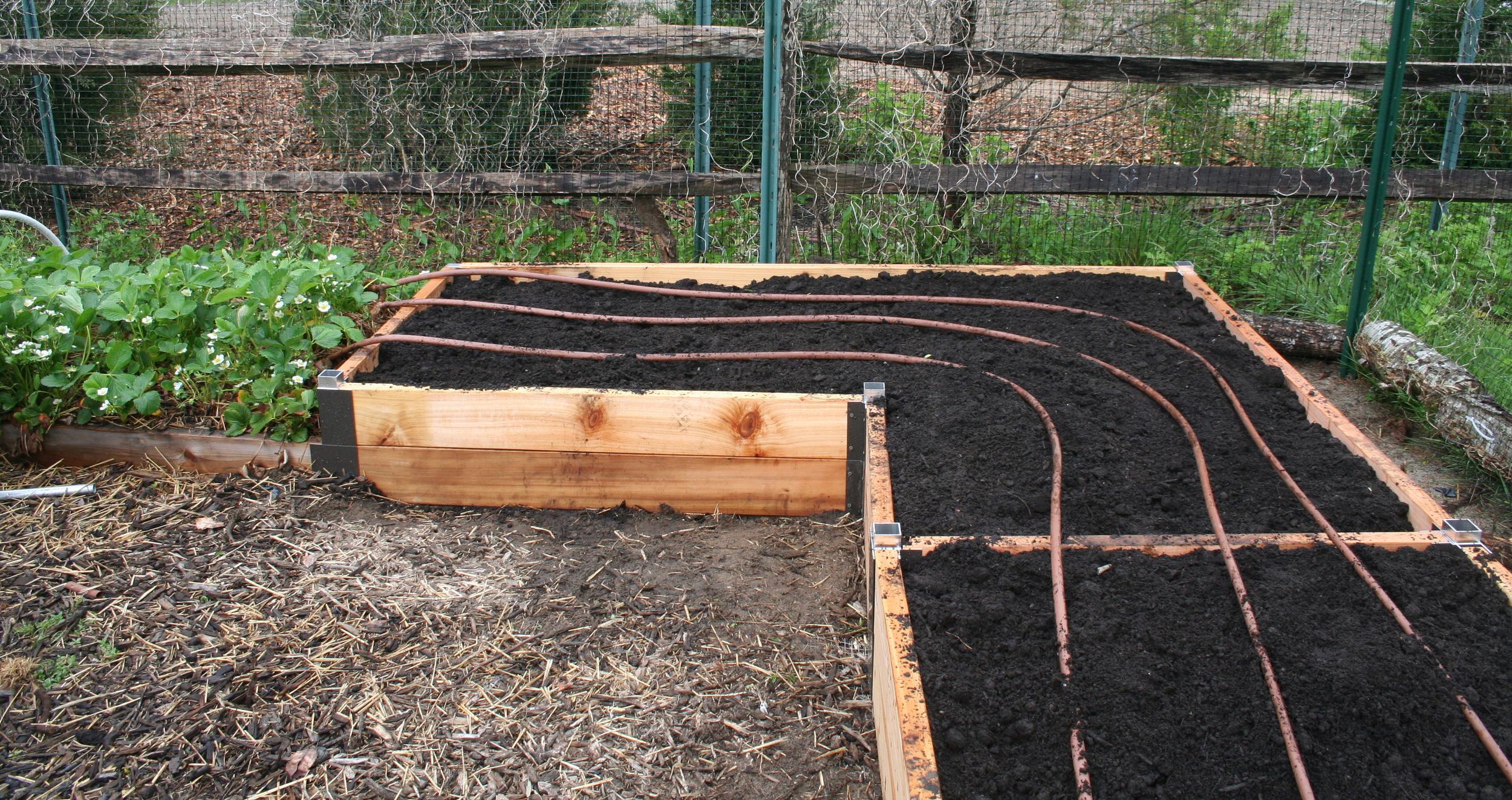Click on the image above for Rasied Bed Corners from Gardeners.com
Click on the image above for Aquacorners from Gardeners.com
Many of you have reached out to me about building raised garden beds this summer. After our seemingly endless winter, the sun is shining today and our temperature should top 60 degrees. It's really time to start gardening!
I swear by the method of dense companion planting in raised beds (read Sally Jean Cunningham's Great Garden Companions - it's my "go to" gardening bible). Planting your crops close together, with herbs and flowers interspersed amongst them, will eliminate the empty spaces where weeds might take root. And if you line your beds with "hardware cloth" (1/2" wire mesh that you can find at Home Depot or Lowe's), the burrowing critters won't be able to find their way to your crops. Most importantly, raised beds will save your back when you're tending the garden!
Original raised bed on the right; expansion materials and new bed half completed at center.
I've built two types of raised beds and they're both attractive and durable. The first type - which is less costly, but more labor intensive (perfect for experienced DIY-ers) - was described in detail in an earlier post.
I used untreated cedar, but the National Gardening Association says that new ACQ pressure treated lumber is safe for vegetable gardens too. My local lumberyard, Speonk Lumber, cut the cedar boards for me so that all I needed to do was slip each board into the slots in the raised bed corners and insert a screw to hold it all together.
Once I assembled my garden beds, I combined equal amounts of organic topsoil and compost from my local garden center (ordered for my initial beds by the cubic yard, which is far less expensive than purchasing by the bag), along with some peat, and shoveled everything into the beds. To figure out how much soil mix I needed, I multiplied together the length, width and height of my bed in feet, and then divided by 27 to obtain the number of cubic yards of soil mix. For my first beds, which were 18" high and 4' wide by 8' long, I needed (1.5 x 4 x 8) / 27 = 1.8 cubic yards of soil mix.
The only thing I had left to do was add water and seeds. Providing a regular supply of water to your garden beds is critical. In my 4' wide beds, I have three parallel lengths of drip hose running down each bed to ensure that every plant in the bed has access to an adequate water supply (see photo). My irrigation operates on a timer, and I water before sunrise each day to ensure that the water goes directly to my plants' roots and doesn't evaporate in the heat of the day. Gardeners.com sells Aquacorners and DIY drip systems. Although I didn't use them in my garden beds, they are well-reviewed on the Gardeners.com web site.
Expansion complete! Soil and irrigation in place...all we need now are seeds and water.
Rome wasn't built in a day. But my garden beds were. If you've been thinking about starting a garden, now's the time. In the northeast, where I live, it's time to plant peas, lettuces, spinach, radishes and a host of other cool weather crops. I'll have my hands in the dirt this weekend. What are you waiting for?
Leave a Comment! Tell us about your Raised Garden Beds.




